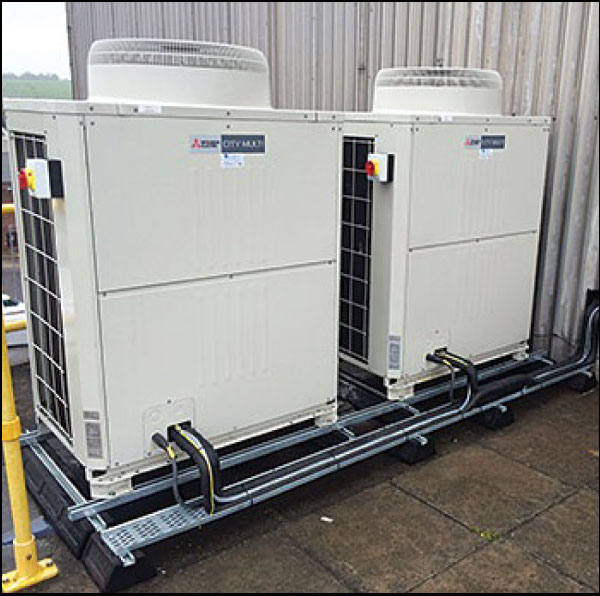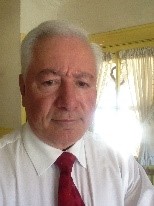
SRS Blog
Building energy efficiency insights from the innovators behind EPIC September 7, 2021
September 7, 2021
Devil is in the Details: Technology-Enabled Tools to Differentiate Proposals for High Efficiency HVAC Equipment in a Competitive Marketplace
HVAC professionals (equipment manufacturers, distributors, and contractors) are increasingly being asked by building owners to provide an estimate of energy savings, greenhouse gas (GHG) emissions reduction, and the financial impact of equipment replacement options to facilitate technically sound decision-making. While this may present a problem for many professionals, fortunately technology-enabled software tools now exist to meet this challenge.
Growing Problem Faced by HVAC Professionals
HVAC professionals operate in a highly competitive marketplace characterized by building owners often viewing HVAC equipment replacements as a commodity while soliciting quotes from multiple competing firms. The end-result is that HVAC equipment replacement proposals typically focus on price and the minimum equipment specification(s) that meets local building energy code (“code compliant”) requirements. Attempting to sell higher efficiency (“above code”) equipment, often accompanied with a price premium, is challenging and, in many cases, not included in an equipment replacement proposal. Unfortunately, the price of an energy improvement project becomes the differentiator rather than the energy savings, GHG emissions reduction, and lifecycle financial impact.
Another challenge facing HVAC professionals in their quotation process is preparing a business case that speaks the language of the building owner. Most building owners are financially oriented and seek to evaluate the impact of their investment against the building’s annual net operating income and its cost-effectiveness over the equipment’s lifetime. Preparing such a business case requires an estimate of both the energy cost savings and installed cost – which are equally important in the cost-effectiveness evaluation. Moreover, these key financial metrics will enable an existing building owner to make an informed and confident investment decision when considering equipment replacement options.
Global warming has placed significant emphasis on GHG emissions and their reduction. Since new HVAC equipment should reduce building electricity and fuel consumption, such measures will also reduce GHG emissions. With a growing number of municipalities requiring building owners to report GHG emissions, coupled with the growth of Environmental, Social and Governance (ESG) programs, more building owners today are requesting that HVAC professionals provide estimated GHG emissions reduction impact in their proposals. Moreover, many utility- and government-sponsored building energy efficiency programs provide incentives or rebates to install high efficiency (“above code”) equipment. These programs require an estimation of the project’s GHG emissions reduction impact.
Principal Challenge in High Efficiency HVAC Equipment Proposals
The principal challenge faced by many HVAC professionals today is twofold. First is a lack of tools necessary to be able to respond time and cost effectively to building owner requests for an estimation of the energy cost savings, GHG emissions reduction, and long-term operating cost savings associated with a building energy efficiency improvement project. Second, HVAC equipment replacement proposals are often “cost only” and do not provide the business case for investment in higher efficiency equipment in the “language” that building owners speak. This is the “language” of cash flow over a project’s life cycle under different financing scenarios, e.g., self-funded or third-party lender financed. In the commercial real estate sector, cash flow is king.
The Response of Forward-Thinking HVAC Professionals
In the past, HVAC professionals desiring to respond to building owner requests to provide estimated energy savings and financial impacts in their proposals had to tap internal engineering team support, if available, or hire a third-party energy auditing professional. These energy professionals typically utilize building energy simulation models that require significant data input to calibrate the model and complete their estimated energy savings analysis. However, the time and budget to prepare these models is often unavailable to meet the turnaround time demands for most project proposals.
Today, forward-thinking HVAC professionals involved in HVAC equipment replacement projects (manufacturers, distributors, and contractors) are collaborating via cost effective technology-enabled tools to estimate energy cost savings, GHG emissions reduction, and financial impacts in real time using a minimum of input data. Such tools are enabling HVAC equipment proposals to be differentiated from competitors while providing the business case that building owners need to confidently invest in high efficiency equipment. Despite the higher “first cost”, high efficiency HVAC equipment (“above code”) often outperforms standard equipment (“code compliant”) when considering lifetime cost savings. With this cost-benefit analysis in-hand, building owners increasingly choose high efficiency equipment. The end-result is an increase in the proposal win rate for HVAC professionals.
In addition, with knowledge of energy consumption and cost savings, HVAC professionals can increase their sales of higher efficiency systems, thereby increasing project ticket size and profit margin. Such equipment can also provide potentially attractive utility incentives or rebates which can be used to reduce total installation cost.
A Technology-Enabled, Cost-Effective Tool to Empower HVAC Professionals
One state-of-the-art technology-enabled solution that can meet the increasing demand from building owners for an estimate of the energy cost savings, GHG emissions reduction, and financial impact of an energy efficiency improvement project is Sustainable Real Estate Solutions’ (SRS) Energy Performance Improvement Calculator (EPICTM). EPIC has been increasingly adopted by HVAC professionals as a time and cost-effective tool that, with minimal input of data, can quickly estimate potential energy savings, GHG emissions reduction, and project financial impact, including lifecycle savings and cash flow.
EPIC can be used by HVAC professionals to estimate:
- Whole building energy consumption based upon peer buildings in the same geographic area, assuming actual building utility data are unavailable. If actual data are available, this information can be input into EPIC.
- Weather-normalized building end-use, e.g., space heating, cooling, ventilation, lighting, etc., energy consumption.
- Existing HVAC equipment’s baseline energy efficiency performance metrics reflecting age and performance degradation.
- Interactive effects between energy efficiency measures (EEMs).
- Energy consumption and cost savings.
- Typical installed costs for comparative purposes of similar EEMs installed in peer buildings relying on a proprietary EEM installation cost database developed from actual energy efficiency projects across the country.
- GHG emissions reduction.
- Lifecycle costing including cash-flow analysis and savings-to-investment ratio (SIR) under different financing scenarios.
EPIC also enables the real time evaluation of different EEM scenarios to facilitate comparisons, e.g., comparing key financial impacts of “code compliant” versus “above code” high efficiency equipment options which will support more informed decision-making.
Everybody Wins
When HVAC professionals provide the building owner with the business case for investment in high efficiency equipment, everybody wins:
- Building owners win as they have the information needed to make a confident and expedited investment decision, particularly when more expensive, but more energy efficient equipment is purchased.
- Equipment manufacturers win as they accelerate sales of high efficiency equipment while improving the proposal best practice of their partners.
- Equipment distributors win as they increase the percentage of high efficiency equipment sales while earning a greater share of their contractor’s business.
- Contractors win as they are more responsive to building owner demands resulting in a differentiated proposal that earns a higher win rate. Moreover, increased sales of high efficiency equipment drive ticket size and profit margin and enables the inclusion of utility incentives or rebates which can reduce project cost for the building owner.
- Utility program administrators win as they realize a greater number of high efficiency HVAC equipment replacement projects for which incentives and rebates can be awarded. As a result, program administrators can take credit for the energy savings and the GHG emissions reduction captured via these projects.
Conclusion
Building owners evaluating HVAC equipment replacement options are increasingly demanding estimated energy savings, GHG emissions reduction, and financial impacts be included in their proposals. In response, technology-enabled solutions have emerged to empower HVAC professionals to meet this growing demand. Moreover, state-of-the-art solutions such as EPIC enable HVAC professionals, in real time with minimal data input, to create a differentiated proposal to better support a building owner’s investment decision. The end-result is increased sales of high efficiency equipment leading to an everybody wins outcome for building owners, equipment manufacturers and distributors, contractors, and utility program administrators.
To learn more about how SRS’s Energy Performance Improvement Calculator (EPICTM) can empower HVAC professionals in increasing their proposal success rate, visit SRSworx.com.
Contributing Author

Brian J. McCarter is Chief Executive Officer at Sustainable Real Estate Solutions. Mr. McCarter has been a leader in the commercial real estate software and due diligence information services market for over 25 years. He may be contacted through our Contact page.

About the Author
Anthony J. Buonicore is Director of Engineering at Sustainable Real Estate Solutions. Mr. Buonicore is a licensed professional engineer with almost 50 years' experience in the commercial real estate energy and environmental industry. He may be contacted through our Contact page.

